Special Exhibition of Luxury Goods from the East, Burghley House, England
Burghley House, located in the East Midlands of England, is one of the country’s greatest Elizabethan houses. It dates to the 16th century and was home to William Cecil, the 1st Lord Burghley (1520-1598) who served as Lord High Treasurer to Queen Elizabeth I. The House remains in the hands of the descendants of William Cecil, and like many English and European families, they collected over the centuries exotic and luxury goods from ‘the East’ both as private curios and as public demonstrations of their position, wealth and taste.
Such items usually were housed in cabinets of curiosities or kunstkammer as they became known in German. Princely and aristocratic families across Europe collected for their kunstkammer and today, their contents comprise some of the most sought after and valuable artefacts of the Renaissance and later periods. Provenance often was not valued or might never have been known, and so it often is not recorded exactly where these treasures came from. What was important was they they were a delight to behold, well-crafted and exotic, ie from afar. (See the kunstkammer items we currently have for sale here.)
Some of these such items currently are on display in an exhibition at Burghley House. Many of the items shown are world class.
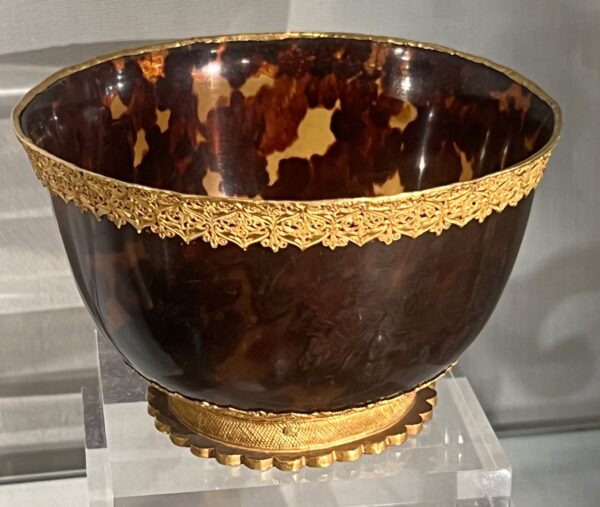
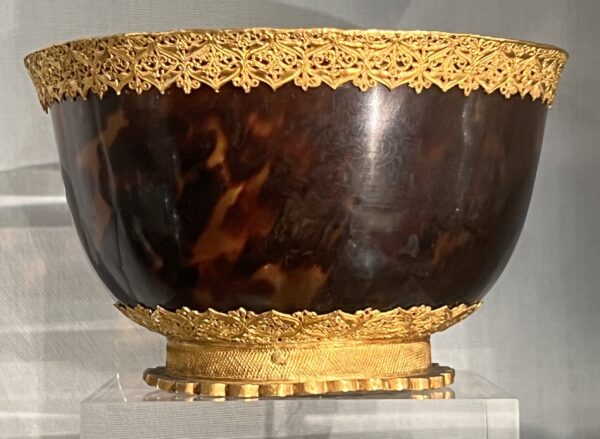
Above: This exceptionally rare bowl is made from pressed tortoiseshell with solid gold mounts. Its precise origins are unclear but the exhibition’s curators suggest somewhere in Southeast Asia.
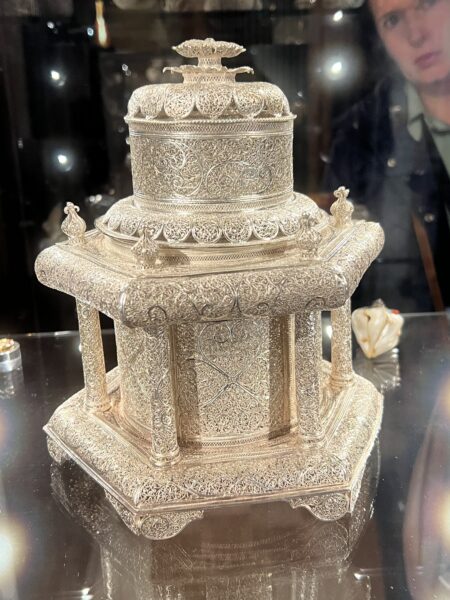
Above: This large and extraordinary silver filigree centrepiece is attributed to 19th century India, but is more likely to be from the Dutch East Indies, probably Batavia, and date to around 1700.
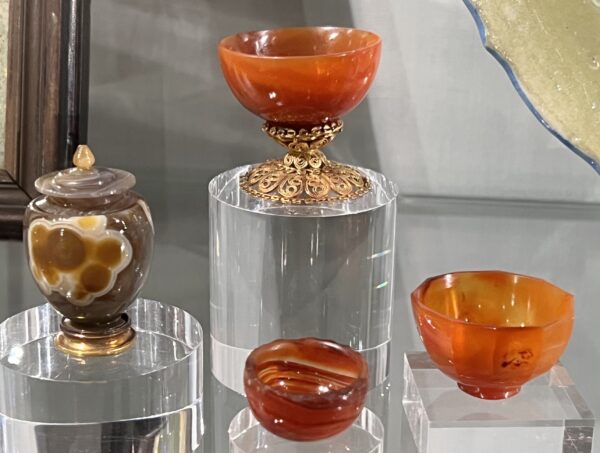
Above: These small vessels of carnelian, some with gold mounts, are from India and date to the 17th century. Recently, we had a related scent bottle, now in a private Indian collection – see it here.
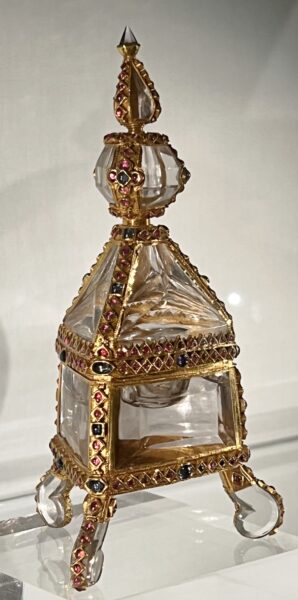
Above: This extraordinary triangular salt cellar but also possibly a reliquary is of carved rock crystal with gem-set gold mounts. It dates to the first half of the 17th century and most probably is from Sri Lanka (although the curators at Burghley House have described it as Indo-Portuguese.) Probably it was made initially for the Portuguese market.
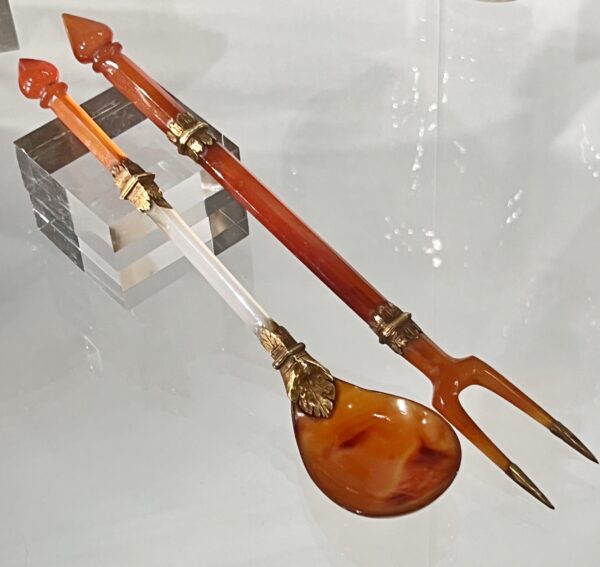
Above: This fork and spoon is from 17th century India and of chalcedony and white carnelian, with gold mounts.

Above: A gold bezoar stone holder and stand, and an actual bezoar. Probably from 17th century Goa (India), bezoar stones were believed to neutralise poison. Rare and much sought-after, often they were presented as courtly gifts. Most probably entered Europe via Lisbon.
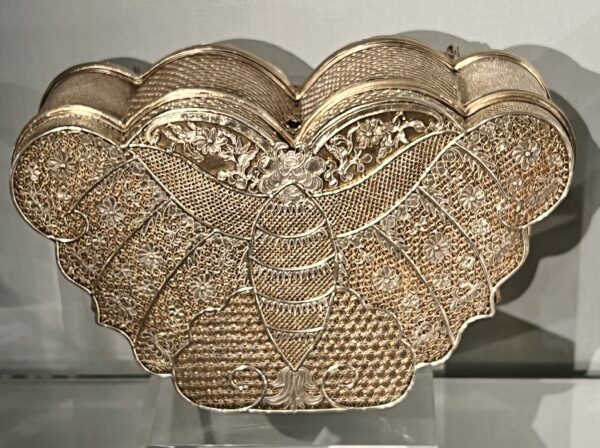
Above: a large silver box in the form of a butterfly – one of a pair. Attributed to 19th century China but the exhibition’s curators, the boxes probably are the product of local Chinese craftsmen in Sumatra and date to the 18th century.
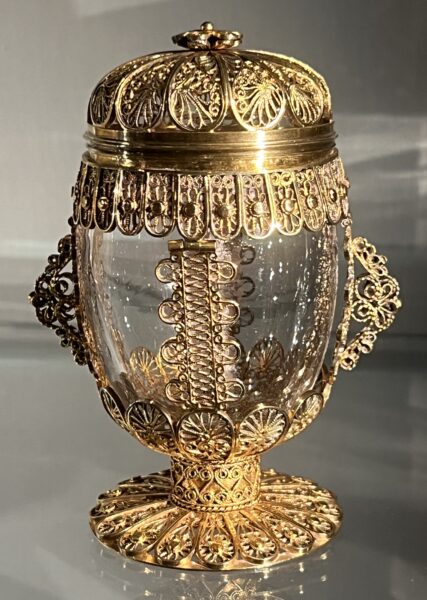
Above: One of a pair of vessels with gilded silver filigree mounts, these are likely the work of 17th century artisans possibly in Sumatra. The crystal vessels most probably replaced the shell of a small coconut.
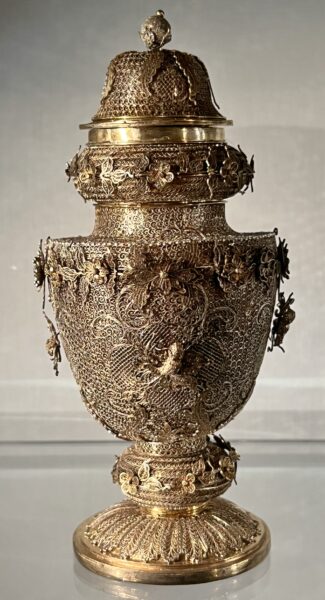
Above: A large silver filigree lidded vase, from either 18th century China or Southeast Asia.
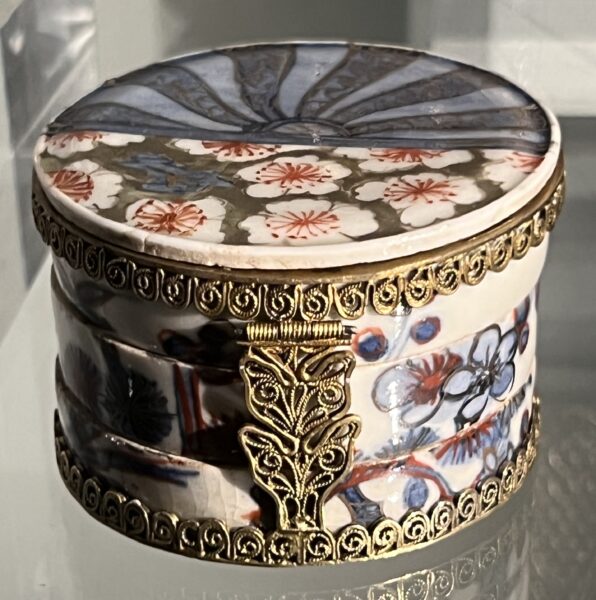
Above: One of a pair of Imari porcelain boxes, possibly used for incense, from 17th century Japan. The gilded silver filigree mounts were added elsewhere, probably in Southeast Asia.
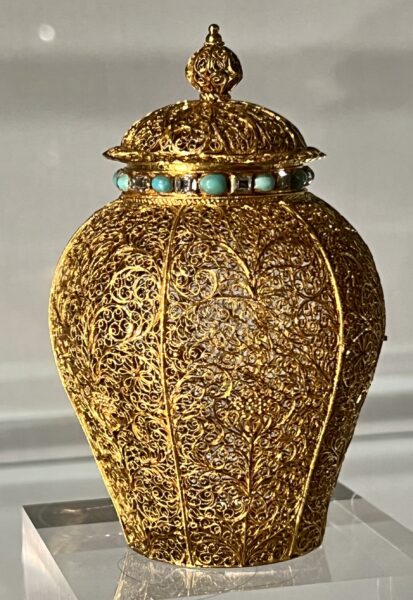
Above: one of a pair of small gold filigree vases based on the form of a Chinese porcelain ginger jar. The necks are inset with diamonds and turquoise (these might be later additions). The exhibition’s curators say that the jars were made in 17th century England but it is also possible that they were made in the Dutch East Indies. The gems were probably added in England.
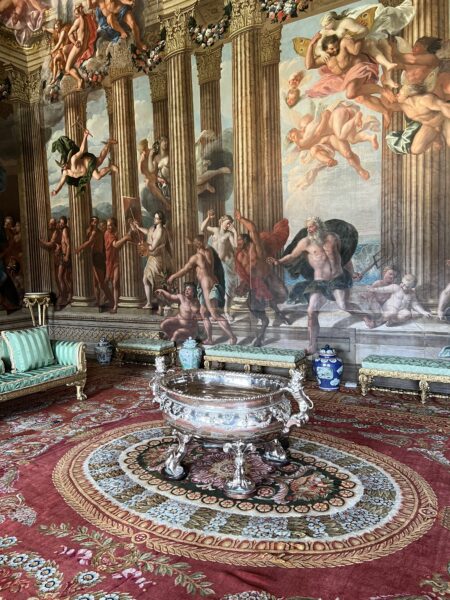
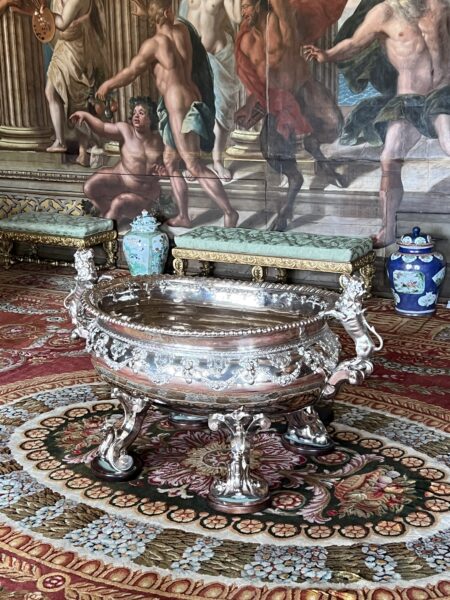
Above: not part of the exhibition of exotic luxury goods but also is Burghley House is this massive solid silver wine cistern. Made by the silversmith Phillip Rollos in England in 1719, it weights more than 100 kilograms and is believed to be the largest such wine cooler known.
© Michael Backman
Receive our monthly catalogues of new items by email.
See our entire Catalogue.

